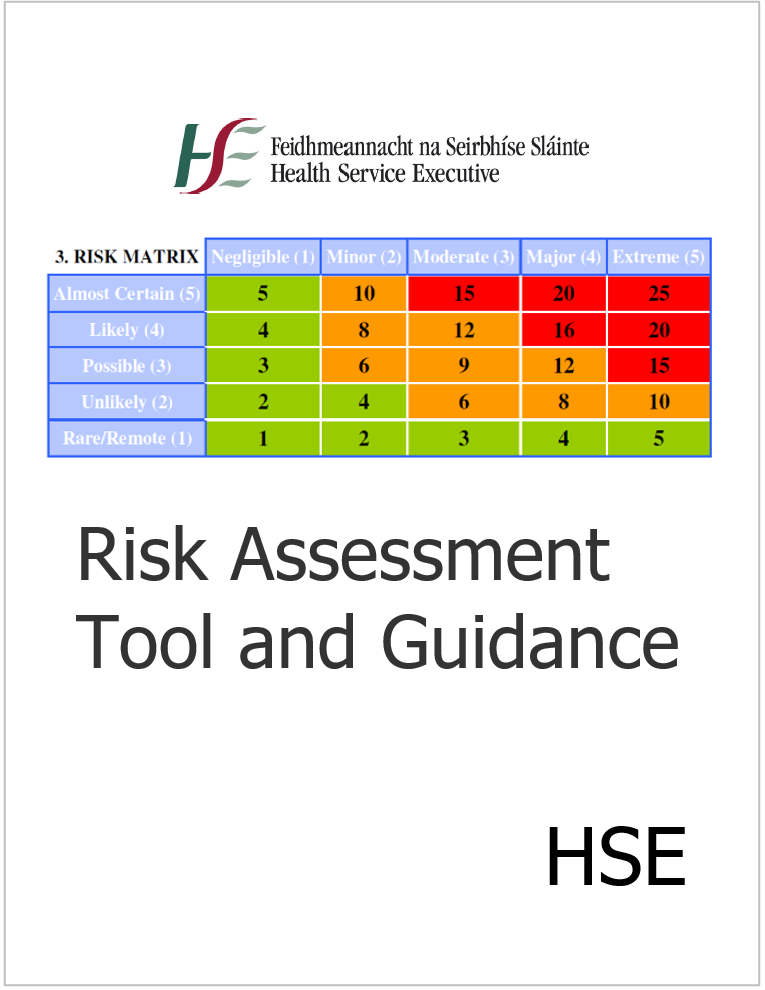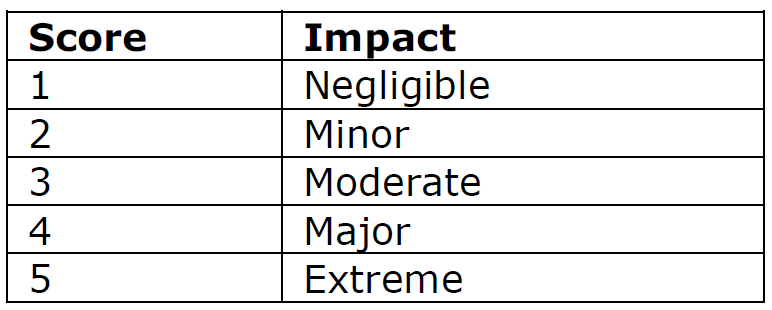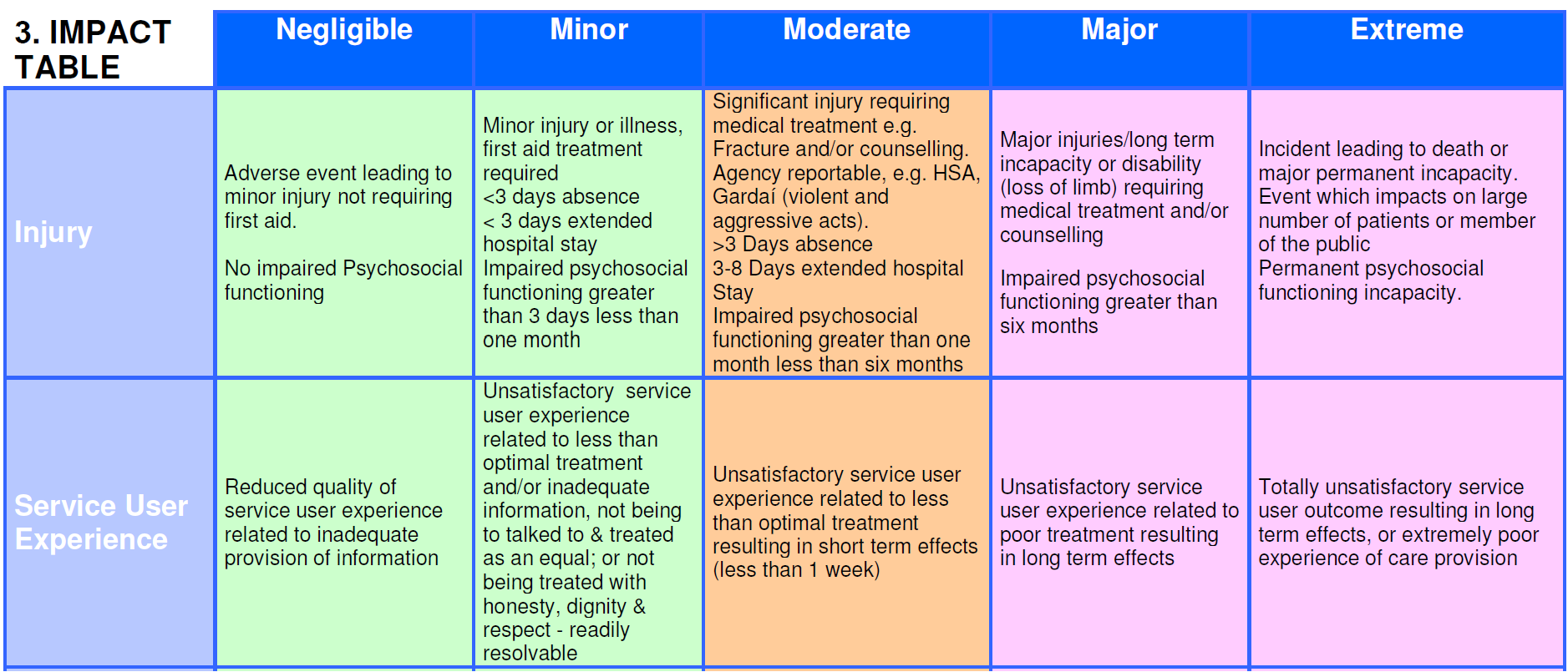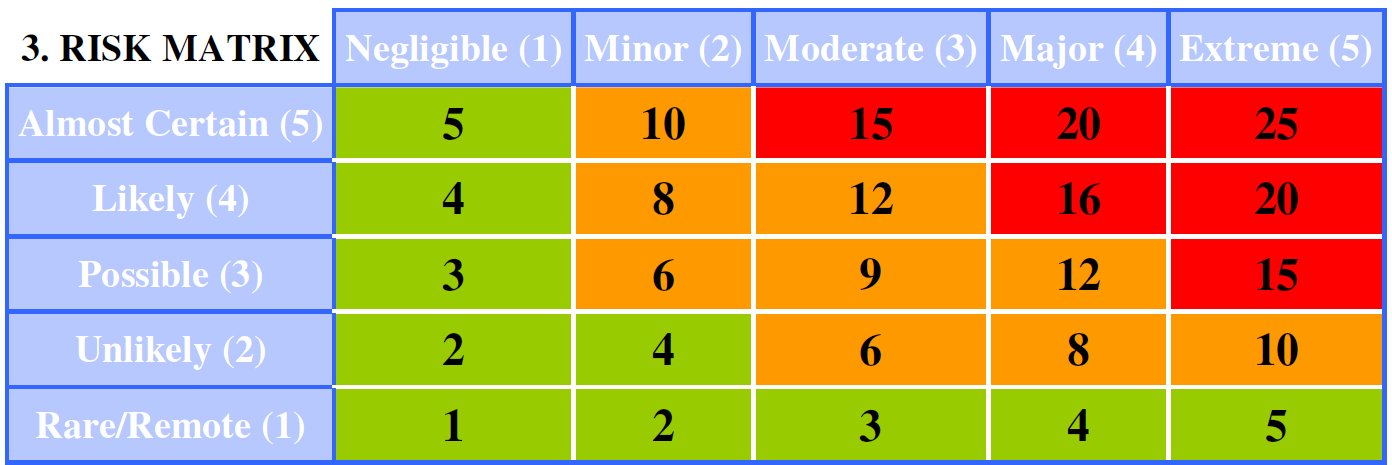Risk Assessment Tool and Guidance / HSE (Health Service Executive) - Ireland
| Appunti Full Plus | ||
| 27 Novembre 2024 | ||
| Salve Visitatore | ||
Risk Assessment Tool and Guidance (and application) / HSE Ireland ID 20501 | 03.10.2023 / Documenti allegati Risk assessment is an essential part of risk management and is the overall process of risk identification, risk analysis and risk evaluation (ISO 31000: 2009). Attach: The management of risk is integral to the business process of all levels in the HSE. For management to ensure that the time spent on managing risks is proportionate to the risk itself, services should have in place efficient assessment processes covering all areas of risk. The HSE has developed a Risk Assessment Tool to support this process. This tool should be applied uniformly to all processes where risk assessment is required e.g. health and safety risk assessment, risk assessment for the purpose of developing and populating risk registers, project management etc. It is not intended that this tool replace the risk assessment process used in specific clinical or care situations e.g. falls, tissue viability etc. Guidance on Risk Assessment and the use of the HSE’s Risk Assessment Tool 1. Risk Identification Risk can be defined as “the chance of something happening that will have an impact on the achievement of organisational stated objectives” (HSE 2008) or “the effect of uncertainty on objectives” (ISO 31000:2009) This step in the risk assessment process seeks to identify the risks to be managed. A risk assessment may concentrate on one or more area of impact relevant to the organisation or activity i.e. it may be specific to a particular project or hazard area e.g. biological hazards or it may be conducted on a more general basis e.g. for the purpose of developing a service or organisational risk register. It is essential that the employees identifying risks are knowledgeable about the policy, service area, process or activity being reviewed. When areas of risk have been identified it is important that these are described in a manner that accurately and comprehensively ensures that the exact nature and magnitude of the risk is captured. To assist with this the following approach should be used. The ‘ICC approach’ to risk description (Impact, Cause, Context) - Risk is inherently negative, implying the possibility of adverse impacts. Describe the potential Impact if the risk were to materialise. Examples: Project overruns resulting in financial loss (Impact) due to the unavailability of key project staff (Causal factor) within Procurement (Context). 2. Risk Analysis Risk analysis is about developing an understanding of the risks identified. In subjecting a risk to analysis it is essential that account is taken of the existing control measures. 2.1 Describe of the existing control measures These include all measures put in place to eliminate or reduce the risk and include processes, policies, procedures, guidelines and engineering controls, training, emergency arrangements, preventative maintenance controls, protocols, team working, etc. 2.2 Make a judgement on the adequacy of the existing control measures. When examining the existing control measures, consideration should be given to their adequacy, method of implementation and level of effectiveness in minimising risk to the lowest reasonably practicable level. 2.3. Rate the risk in terms of determining the likelihood and the impact of the risk occurring. Risk is measured in terms of likelihood and impact i.e. the likelihood of an event occurring combined with its impact (consequence). The methodology for measuring risk in this way plots a single ascribed value of likelihood against a single ascribed value of impact and therefore reduces risk to a single, easily comparable value. This process, except in the relatively rare case where statistical data are available, uses informed but subjective judgement in assigning the values for likelihood and impact. If different risks are to be compared across the HSE, it is necessary to minimise the variation in the judgement applied to the values of likelihood and impact assigned to a risk. This requires the adoption of a HSE-wide, standardised approach to the assignment of likelihood and impact. Rare/Remote (1) Unlikely (2) Possible (3) Likely (4) Almost Certain (5) Likelihood Scoring The likelihood table (table 1) is used to assess the likelihood of the risk occurring TABLE 1: LIKELIHOOD SCORING Likelihood scoring is based on the expertise, knowledge and actual experience of the group scoring the likelihood. In assessing likelihood, it is important to consider the It should be noted that in assessing risk, the likelihood of a particular risk materialising depends upon the effectiveness of existing controls. In assessing the likelihood, consideration should be given to the number and robustness of existing controls in place, with evidence available to support this assessment. Generally the higher the degree of controls in place, the lower the likelihood. The assessment of likelihood of a risk occurring is assigned a number from 1-5, with 1 indicating that there is a remote possibility of its occurring and 5 indicating that it Impact Scoring Injury to Service User/Staff/Public Risks Service User Experience Risks Compliance with Standards (Statutory, Clinical, Professional and Management) Risks Objectives and Project Risks Business Continuity Risks Adverse Publicity/Reputation Risks Financial Loss Risks Environment Risks TABLE 2: IMPACT SCORING Each area of risk, in relation to the impact scoring, is outlined in table 3. How to use the Impact scoring table Step 1 Step 2 Step 3 Guidance on the Initial Risk Rating - The high risks are scored between 15 and 25 and are coloured Red. - Medium risk are scored between 6 and 12 and are coloured Amber. TABLE 4: HSE RISK MATRIX (COMBINING IMPACT AND LIKELIHOOD) Example 1: Likelihood of 3 (Possible) x Impact of 2 (Minor) = 2 x 3 = 6 (Amber) HSE Health Service Executive - Ireland Collegati |
||
 |
||
|
è un sito di INVIO NEWSLETTTER Se vuoi cancellarti dall'invio della newsletter oppure effettua il login al sito ed entra nella Tua Area Riservata, in “Modifica dati” agisci con la spunta sul box di selezione “Newsletter”. L'elenco completo di tutte le ns newsletter è qui: Archivio newletter |
||
  |
||
| Certifico Srl 2000-2024 | VAT IT02442650541 | ||


























